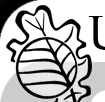 |
 |
 |
 |
|
main | about us | collections | database | people | visitors | contribute | shop | newsletters
|
 |
|
|
 |
About the Herbarium
The
University of British Columbia Herbarium is the largest in Canada west
of Ottawa, and is home to over half a million plant specimens from around
the world. This collection is critical to the identification, monitoring,
and conservation of plant biodiversity in British Columbia, and is an
important resource for education and scientific research.
The UBC Herbarium has five major collections: vascular
plants (flowering plants, conifers, ferns, and their relatives);
bryophytes (mosses, liverworts
and hornworts); macroscopic algae (mostly
seaweeds); lichens; and fungi.
In addition to the world's largest collection of BC plants, our internationally
recognized bryophyte collection is the largest in Canada. We also
have important collections of Pacific algae, fungi, Hawaiian plants
and tropical prayer plants. |

Microcladia coulteri, or Sea Lace, from the Algal collection
|

The fireproof cabinet of type specimens mounted on archival paper
|
A
Public Resource
We provide learning resources for University students and the community,
through classes, student research projects, public workshops, symposia,
herbarium tours, and online tools.
Plant Identification
Ecological consultants, conservation managers, agriculturists, archaeologists,
police, government agencies, and the general public use our specimens
to identify plant species and determine their distributions.
Our specimens have been used to identify everything from a rare weed
infesting overgrazed fields on Pender Island to a native grass causing
cyanide poisoning of cattle in the Fraser Valley.
Scientific Research
Specimens from the UBC Herbarium are used by researchers around the
world, and contribute to numerous publications. Our specimens have
been used to study DNA, species variation, plant chemistry, and even
to analyze air pollution in the Fraser Valley over time by extracting
heavy metals from moss specimens.
Herbarium specimens are primarily used to study the relationships
among plants and to describe and document new plant species and changes
in the classification or naming of plants.
Conservation
Conservation biologists use herbarium specimens to determine the ecology
and distribution of rare plant species, and to learn how to identify
species that are not often seen in the wild. Ecologists use the same
kinds of information to document the spread and changing distribution
of invasive species. |
|
British
Columbia is Canada's most biologically diverse province, with 70% of
the nation's vascular plants and moss species occurring here in our
own backyard. At the same time, plant biodiversity is threatened globally
with human population growth and habitat loss, with many species now
facing the possibility of extinction.
It is now more critical than ever to document and preserve plant
biodiversity. By providing material for scientific research and conservation
initiatives, the UBC Herbarium plays a key role in our continuing
quest to find new and better ways to protect the world's botanical
resources.
As an important tool in education, for both university students and
the public, the UBC Herbarium also helps increase our understanding
and appreciation for the world of plants, helping to foster a sense
of responsibility and environmental stewardship.
|
|
© Beaty Biodiversity Museum - UBC |







